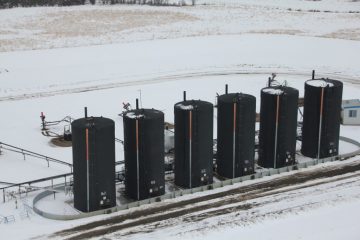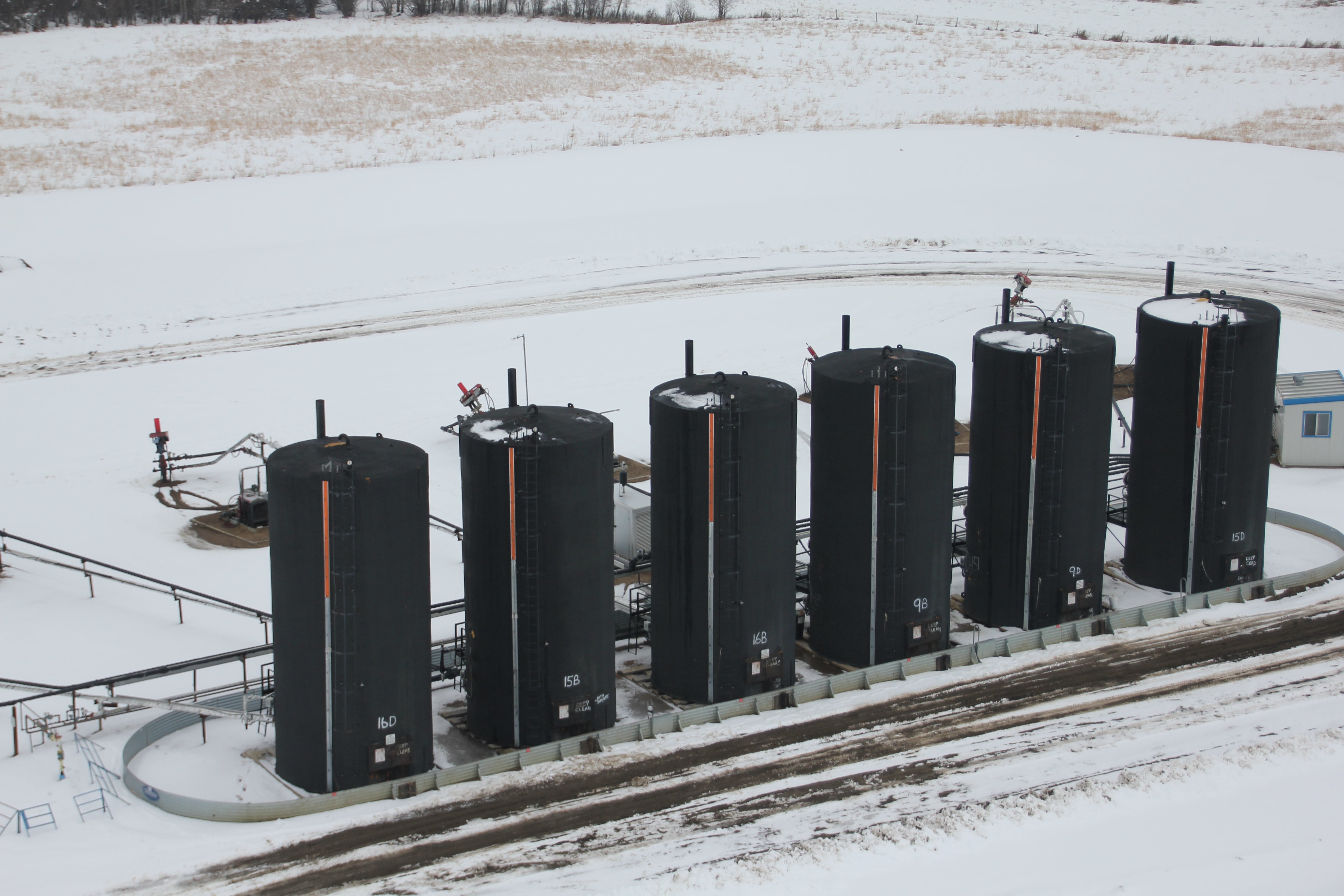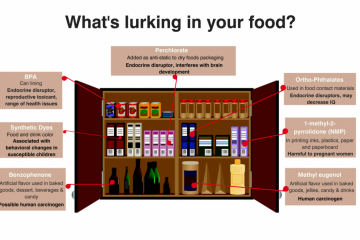D.C. Circuit Grants Oral Argument Postponement in Litigation over Mercury and Air Toxics Standards
The U.S. Court of Appeals for the District of Columbia Circuit today granted a Trump Administration request to delay litigation[…]
Read moreDedicated To People, The Planet, and All Its Inhabitants – Since 1996

The U.S. Court of Appeals for the District of Columbia Circuit today granted a Trump Administration request to delay litigation[…]
Read moreThursday, April 27, 2017
Read moreBy Holly Pearen
 A new report from the Oklahoma Water Resources Board’s (OWRB) Produced Water Working Group indicates that oil and gas companies looking for ways to dispose of large volumes of wastewater should focus on recycling those liquids within the oil and gas fields, and not – as some suggest – use it for irrigation or other surface applications where human and environmental exposure is a risk.
A new report from the Oklahoma Water Resources Board’s (OWRB) Produced Water Working Group indicates that oil and gas companies looking for ways to dispose of large volumes of wastewater should focus on recycling those liquids within the oil and gas fields, and not – as some suggest – use it for irrigation or other surface applications where human and environmental exposure is a risk.
The Produced Water Working Group, a panel of 17 state experts convened by Oklahoma Governor Mary Fallin in December, 2015, to study various options for wastewater reuse, determined that treating wastewater for use outside of the oil field is not economical, nor are the environmental and health risks well understood.
In fact, the Working Group didn’t evaluate health and environmental risks for any of the 10 alternative uses evaluated. While research into reducing the cost of desalination, by powering treatment facilities with solar or excess lease gas, for example, may be promising, it won’t be sufficient to green light uses that introduce oil and gas wastewater into contact with communities and ecosystems.
To that end, the OWRB recommends that scientific efforts should be devoted to “identifying toxicological risks and protective water quality targets to ensure that the environment and public health are adequately protected under various reuse scenarios.” This is exactly right.
Evaluating the real health and safety impacts of using produced water outside the oilfield will take time and accurate information.
Oklahoma has the time. Governor Fallin wisely convened the Produced Water Working Group to begin identifying and developing potential alternative water sources needed to supply the state with “Water for 2060.” For oil and gas wastewater, it may take a decade to identify and answer the fundamental questions needed to assure the public that new uses don’t cause more problems than they solve.
The Oklahoma Water Resources Board’s long-term state-wide energy and water planning gives operators, regulators, researchers and the public enough lead time to meaningfully evaluate wastewater reuse options, and implement policies that protect the public and the environment. The state should take advantage of this lead time to fully address environmental and health risks prior to permitting alternative uses outside the oilfield.
But the report suggests that Oklahomans don’t yet have the necessary data. If the state is serious about considering produced water as a potential new water resource, basic data regarding what is in the water, how much is produced, where it’s produced, and where it goes, should be collected, reported and analyzed. The OWRB report is a good first step. The next step is getting serious about meaningful public health and environmental impacts analysis by collecting basic, readily available, detailed information about this potential resource.
Until then, the Working Group report makes it clear that the most promising near term options for oil and gas wastewater management involve more efficient use of existing infield recycling and disposal techniques.
Thursday, April 27, 2017
Read more
By Drew Nelson
 Two studies released this week make it clear that Canada’s push toward methane regulations for the oil and gas industry is a smart move. And, while data of Canada’s oil and gas methane problem is still limited, these studies reinforce what research of the U.S. oil and gas industry found: oil and gas facilities are leaking far more than the industry reports — and more than it would like us to believe.
Two studies released this week make it clear that Canada’s push toward methane regulations for the oil and gas industry is a smart move. And, while data of Canada’s oil and gas methane problem is still limited, these studies reinforce what research of the U.S. oil and gas industry found: oil and gas facilities are leaking far more than the industry reports — and more than it would like us to believe.
The first study, focused on Alberta and released by the Canadian environmental action organization Environmental Defence, concluded that industry is underreporting the amount of equipment located at their facilities, which means they emit more than official emission inventories report. Additionally, the study found that Alberta’s oil and gas facilities average about one large emission source per well.
The second, conducted by the David Suzuki Foundation and focused in British Columbia, measured methane emissions at existing oil and gas facilities and found that emissions are large and widespread. In fact, in just one development area of British Columbia, facilities could leak 111,800 tons of methane each year – the climate pollution equivalent of burning more than 4.5 million tons of coal or more than two million cars over the next two decades. Further, methane emissions from this area were shown to be at least 2.5 times higher than reported by the B.C. government but may be much higher.
This new research is troubling for several reasons.
First, methane’s not a usual pollutant. Because methane is the primary ingredient of natural gas, every ton of avoided emissions is a ton of natural gas that can be sold. In 2015, more than $320 million USD of methane (95 billion cubic feet) escaped from oil and gas operations in Canada. That amount of wasted fuel was enough to serve all the households in Edmonton and Calgary combined for the entire year.
In addition to being wasteful, these emissions are also exacerbating global warming. Methane is over 80 times more potent a heat trapper than carbon dioxide over the first 20 years in the atmosphere.
Finally, the oil and gas industry is the largest source of man-made methane emissions in Canada. If its methane emissions are dangerously under-reported, the country’s other attempts to reduce its climate emissions are severely undercut.
Together, these two studies underscore the importance of Canada’s effort and Alberta’s action to stem methane emissions from its oil and gas industry. They also expose the folly of industry’s seemingly contradictory claims that (1) there’s no problem, and (2) regulations aren’t necessary because they’ll fix the problem voluntarily. But if industry can’t even report accurate emission figures, how are we to believe it will reduce them?
Economic analyses have shown that methane reduction is extremely cost effective and one of the most powerful short-term climate strategies at our disposal. In the last few years, leaders in Canada and Alberta have demonstrated they agree by committing significant reductions of oil and gas methane emissions by 2025. For context, a 45% reduction worldwide would have the same 20-year climate impact as closing one-third of the world’s coal plants.
These new studies — and the research that must follow — show that policy makers in Ottawa and Edmonton must reduce these emissions, even in the face of growing pressure from industry to walk back their commitments. Methane emissions are a problem around the world, specifically in the oil and gas industry. These new Canadian studies add to the growing body of research that show the problem is worse than we once thought. Fortunately, there are many simple and affordable solutions available to reduce these emissions and, in turn, cut needless energy waste and climate pollution. The need for strong methane rules in Canada and Alberta has never been clearer, and neither has the opportunity for Canada and Alberta to make their oil and gas industry cleaner, more efficient and more responsible.
In a major victory for California’s fight against climate change, the state’s Third District Court of Appeal today forcefully rejected[…]
Read more5 April, 2017 – New research indicates that climate change will wreak havoc on farmers in America as they struggle to adapt to the rapid increase in heat.
The post America’s farmers face uncertain future appeared first on Climate News Network.
Read more
By EDF Blogs

A sample of the diverse groups that have come out against President Trump’s Executive Order on climate change.
By Charlie Jiang
President Trump’s executive order seeking to unravel critical public health and climate protections — including the Clean Power Plan — is being met with strong rebuttals and a clear demonstration of ongoing climate leadership from across the country.
An extraordinary diversity of American faith and justice leaders, businesses, health and security experts, and elected officials have spoken out against Trump’s actions or vowed to continue reducing carbon pollution and move towards a low-carbon future.
The overwhelming response to these recent attacks on our vital climate safeguards shows that Americans are coming together to protect our communities. Millions of Americans — a majority of adults in every congressional district — support limiting carbon emissions to guard against climate instability.
Here are some highlights from the many powerful statements made in the last week:
Leaders from at least 15 faith communities raised alarm at the dangerous impacts rolling back climate progress would have on America’s most vulnerable communities:
Health associations representing more than 500,000 doctors and medical experts emphasized the public health imperative of reducing air pollution and addressing climate change:
At least 75 mayors, state governors, and attorneys general who represent more than 149 million people — nearly half of the U.S. population — reiterated the need to combat climate change and protect the communities they serve:
Power companies owning generating capacity able to power roughly two-thirds of all homes in the U.S. spoke out to recommit to providing ever more clean energy in the wake of the executive order. Here is a sample:
Reducing carbon emissions and moving to cleaner sources of energy is good for business, say Fortune 500 companies including Apple, General Electric, and Walmart.
Leading national security experts warned of the impact President Trump’s order will have on American security.
Officials who served administrations in both parties criticized moving backwards on climate:
Community organizers working for environmental justice condemned President Trump’s attacks on America’s most vulnerable communities:
President Trump’s executive order will only take us backwards to an era of more pollution and more disease.
But it is clear from the overwhelming pushback that community leaders, businesses, and health and security experts, as well as millions of Americans across the country, support maintaining strong climate and public health protections and moving forward on clean energy — not turning back the clock.
Read more responses to last week’s Executive Order here.
By Drew Nelson
 Following energy reform in 2013, oil and gas industry expansion in Mexico is moving full steam ahead. The first round of bidding for Mexico-owned deep-water oil leases wrapped last December, ushering in a slew of private companies like ExxonMobil and Chevron for the first time since the 1930s. Additional leases for land that will become hotbeds for oil and gas activity on and offshore are planned later this year.
Following energy reform in 2013, oil and gas industry expansion in Mexico is moving full steam ahead. The first round of bidding for Mexico-owned deep-water oil leases wrapped last December, ushering in a slew of private companies like ExxonMobil and Chevron for the first time since the 1930s. Additional leases for land that will become hotbeds for oil and gas activity on and offshore are planned later this year.
All of this is happening while Mexico is demonstrating remarkable climate leadership, and while countries and energy companies around the world are beginning to act on controlling methane, a harmful pollutant that routinely escapes from the global oil and gas industry. In other words, the Mexico energy boom couldn’t come at more critical time. Mexico ranks as the world’s fifth largest oil and gas methane emitter. Absent strong rules for future development, these emissions could steadily rise as more oil and gas production comes on line as a result of the energy reform.
Conversely, getting the rules right in Mexico before the energy boom happens makes sense – it’s a lot smarter to require a clean industry from the start rather than trying to clean it up years after it arrives. Mexico taking the steps now to implement strong regulations that support responsible energy development would help ensure important protections for its citizens and growing economy.
The good news is that policies to reduce methane are incredibly cost-effective, and many jurisdictions have already begun to develop and implement regulations to address this powerful pollutant. Recent progress in California is an example of best-in-class oil and gas methane regulations and are an important reference as Mexico seeks to develop similar regulations of its own.
Prevention Underpins California’s Methane Rules
Last week, California finalized the strongest oil and gas regulations to rein in methane pollution anywhere in the U.S., joining other red and blue states that are continuing to act (see here, here and here). California’s new rules require oil and gas companies to curb emissions at both new and old facilities operated on and offshore, and will save millions worth of lost gas every year. This is the first major environmental regulation issued since the new U.S. Administration took office, and it sends a clear message that states are charting their own future as leaders in Washington dismantle vital energy and environmental policies that protect all Americans.
Central to California’s methane journey was Aliso Canyon, a mega gas-leak in Southern California that captured worldwide attention. Caused by a well blowout deep underground at a natural gas storage facility, the disaster became the poster child for how bad the oil and gas industry’s methane problem can get when requirements for routine leak inspections, equipment maintenance and operation is lacking. Case in point: documents demonstrate the facility wasn’t required to inspect for well-casing thickness or for gas leaks at the surface even though it had experienced an increasing number of infrastructure integrity problems in recent years and was operated without secondary containment systems.
Aliso Canyon – and California’s lesson learned from it– stands as an example for Mexico. It is squarely in Mexico’s interest to ensure that all oil and gas companies operating within its borders meet the same environmental safety standards required elsewhere. Without consistent policies, companies can exploit differences in national and subnational safeguards and ultimately hurt Mexico’s economy and citizens.
Methane: An Urgent Climate Pollutant
To appreciate the significance of Mexico’s situation, you have to consider what’s happening around the world regarding climate science and policy. In March, the World Meteorological Organisation released its State of the Climate Report, and the news was alarming. Global temperature broke records again in 2016, while sea-level rise accelerates. WIRED Magazine concluded, “we have surpassed our understanding of our changing climate and have stepped into truly ‘uncharted territory’”.
There is also growing understanding of the powerful role methane plays in global warming. Methane is a potent greenhouse gas over 80 times more damaging than carbon dioxide over the first 20 years it sits in the atmosphere. Scientists say methane accounts for about 25 percent of current warming and that emission levels are spiking worldwide. Globally, the oil and gas industry is among the largest emitters of methane through accidental or intentional releases.
A climate scientist at Simon Frazer University put it simply: “We need to mitigate both [methane and carbon dioxide] as soon as possible. There are no trade-offs.”
This urgency has a silver lining. Because methane is so potent, reducing it will have quick and powerful climate impact. For example, cutting global oil and gas methane emissions 45 percent by 2025 would have the same short-term climate benefit as closing one-third of the world’s coal plants. In addition, analyses have shown that reducing methane emissions from the oil and gas sector can be achieved affordably with existing technology.
Mexico’s Energy Boom is Methane’s Next Big Venue
Mexico has been a reliable and visible climate leader – even before its methane pledge last year. And it has a long history of working with leaders in California on a variety of environmental and climate related initiatives.
Now, with new and strong methane model from California, Mexico has a great chance to leverage its pending energy boom to help, rather than hinder, its efforts to meet its international methane pledge. By establishing fair and sensible rules for its growing energy industry, it can not only bolster the boom’s economic impact, but further demonstrate the international climate bone fides it earned in recent years.
Image source: Wokandapix, Pixabay

By Tom Neltner
Tom Neltner, J.D., is Chemicals Policy Director
While picking up groceries for the week, a shopper may compare brands, prices, and nutritional information to ensure they make economical and healthy choices for their family. Unfortunately, there’s much more to our food than meets the eye – or makes the label.
Approximately 10,000 food additives are allowed in our food. Food additives are substances used to flavor, color, preserve, package, process, and store our food. While some of the chemicals added to food or used in packaging are harmless, others are downright dangerous and linked to health concerns. Certain additives are linked to reproductive problems, developmental issues, and even cancer.
Perchlorate was approved in 2005 as a component of plastic packaging for dry food despite the fact that it is a known endocrine disruptor that impairs infant brain development. Benzophenone – an artificial flavor added to baked goods, dessert, beverages, and candy – is classified as a possible human carcinogen. The list goes on. No matter where you shop, your family’s health may be at risk.
Check out the cupboard below to see what else could be lurking in your food.
How did we get here?
The Food Additives Amendment of 1958 was intended to better protect the public by giving the Food and Drug Administration (FDA) the authority to regulate food additives. Unfortunately, the flawed, 59-year old law, coupled with weak enforcement, has allowed thousands of chemicals to be added to food with little oversight and limited safety information.
Moreover, the law exempts ingredients “Generally Recognized As Safe” (GRAS) from formal FDA review and approval. Originally intended for common ingredients like vinegar and olive oil, industry now abuses the loophole by bypassing FDA review and making safety determinations without oversight. FDA has never reviewed an estimated 1,000 GRAS substances for safety. And many of the 10,000 additives allowed in our food today were authorized by the FDA or industry decades ago.
This broken system leaves both FDA and consumers in the dark. Under the 1958 law, FDA has no way to know what chemicals are actually being used in which food or in what quantities—even in baby food.
How can we make food safer?
The food regulatory system does not ensure the safety of our food. To fix our broken food system, we must:
Ultimately, to solve the problems in the food system and protect public health, industry should not wait for action by FDA or Congress. Companies should lead on removing the worst chemicals of concern and ensure that FDA reviews all chemicals used for safety.
Consumers are increasingly concerned about chemicals in food. It is long past time for the food regulatory system to do its job and ensure the safety of all the food we give to our families.